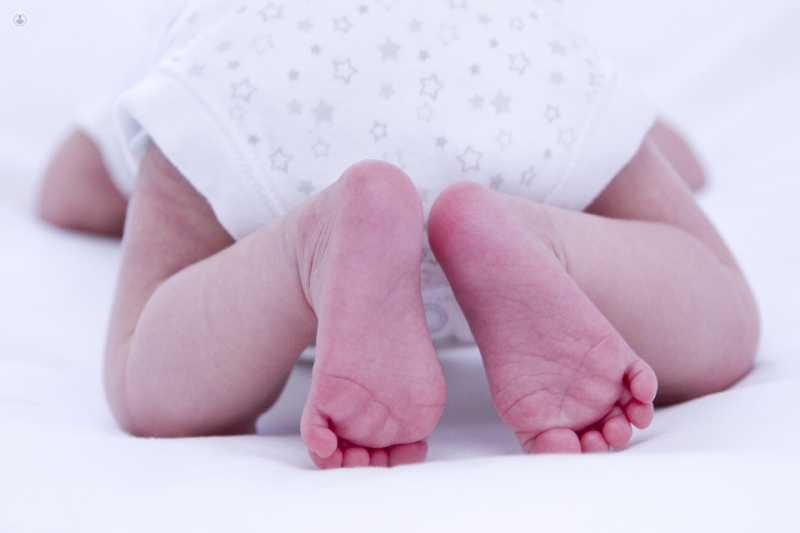


What is cerebral palsy?
Cerebral palsy (CP) refers to a group of non-progressive disorders of posture and movement that limit activity. It is caused by injury to the brain occurring during its development, whether in the foetus during pregnancy, during birth, or in the first few years of life.
Today, CP is the most common cause of motor dysfunction in children. Motor dysfunction is often accompanied by perceptual, sensory, cognitive or communication impairments, musculoskeletal disorders or epilepsy.

CP can be classified according to when the brain injury occurred:
- Congenital: before birth.
- Natal or neonatal: during birth or just after.
- Acquired or post-neonatal: after the first month of life.
CP can also be classified according to the particular motor dysfunction present:
- Spastic CP: the most common type. This causes stiffened muscles, exaggerated reflexes and difficulty walking.
- Athetoid or dyskinetic CP: characterised by sudden changes and fluctuations of muscle tone. Presence of reflexes and involuntary movements. The face and tongue may also be affected.
- Ataxic CP: the least common type; it is characterised by difficulty maintaining balance, appearing as clumsy and jerky movements.
- Hypotonic CP: rare; characterised by low muscle tone, strong deep tendon reflexes and overly relaxed muscles.
- Mixed CP: when there is injury to more than one part of the brain, combinations of the above symptoms may occur.
Prognosis:
The prognosis of CP, including its severity and possible complications, depends on many factors. A better prognosis of CP can be made when the child is around 2-3 years of age, as movement problems can stabilise around then. If symptoms are more severe, especially if they affect basic functions such as swallowing or breathing, the child’s life expectancy may be reduced. If the child has a certain level of autonomy (they are able to walk or perform other functions independently), their life expectancy will be greater, and the prognosis is better. It has been calculated that a child with severe CP may reach 30 years of age whilst a child with moderate CP may reach between 60 and 80 years of age.
Symptoms of cerebral palsy:
The symptoms vary according to the severity of CP, with some children having milder symptoms and others having more severe symptoms.
Symptoms of CP include:
- Variations in muscle tone: too stiff or too floppy.
- Exaggerated reflexes (spasticity).
- Ataxia: lack of muscle coordination during movements.
- Difficulty performing fine movements (e.g. writing, buttoning a shirt)
- Difficulty swallowing or talking. Excessive dribbling.
- Involuntary movements or tremors.
- Athetosis: slow writhing movements.
- Walking using one foot only or dragging one leg.
In some children, CP causes attention, perception, memory, reasoning or language problems, making them more likely to have social problems or experience mental health issues.
Medical tests for cerebral palsy:
An early diagnosis is crucial but may be very difficult. Generally, the diagnosis is not made until several months or even years after birth, including cases of congenital CP. In this respect, any information that parents can provide to doctors about antenatal, natal and postnatal history is extremely useful.
To establish a diagnosis, a full physical examination will be carried out, with special attention given to the child’s psychomotor development. A general neurological examination will also be carried out. If deemed necessary, other investigations may include laboratory tests, neuroimaging studies, electrophysiology studies, and metabolic and genetic analyses.
What are the causes of cerebral palsy?
CP is caused by impaired or abnormal brain development, normally occurring before birth. Some of the causes are:
- A gene mutation leading to abnormal brain development.
- Antenatal stroke: an interruption in blood supply to the brain during development.
- A maternal infection may affect foetal development.
- A neonatal infection may cause inflammation in or around the brain.
- Brain injury in the baby.
- Lack of oxygen supply to the brain, normally related to problems during birth.
Can cerebral palsy be prevented?
With appropriate care of pregnant woman and later her baby, certain risk factors can be eliminated. Prenatal, natal and postnatal factors potentially involved in the development of CP should be given due consideration.
Some of the recommendations are as follows:
- Pregnant women must receive appropriate medical follow-up, from the moment pregnancy is confirmed to birth. This includes monitoring and the control of blood pressure.
- The pregnant woman must be well nourished and take dietary supplements, including folic acid and iron.
- Pregnant women must not consume alcohol, tobacco or drugs whilst pregnant.
- Prevent intrauterine infections, German measles and toxoplasmosis.
- Prevent injuries to pregnant women and later to her baby.
- Early diagnosis and treatment of hyperbilirubinemia (an increase in the levels of bilirubin in the blood of new born babies).
Treatments for cerebral palsy:
There are no curative treatments for CP but there are several treatments that can help the child maintain their quality of life.
The disorder is treated by a multidisciplinary team of specialists who can focus on improving movements, stimulating intellectual development or achieving a level of communication that benefits social relationships.
Some of the possible treatments include:
- Physical and occupational therapy.
- Physiotherapy sessions.
- Language therapy.
- Medications to control epileptic symptoms, muscle spasms or pain.
- Surgery to correct anatomical impairments.
- Use of orthopaedic adaptations
Which specialist treats cerebral palsy?
CP should be treated by a multidisciplinary team of specialists including paediatricians, neurologists, neurosurgeons, orthopaedic surgeon, physiotherapists, speech therapists and psychologists.